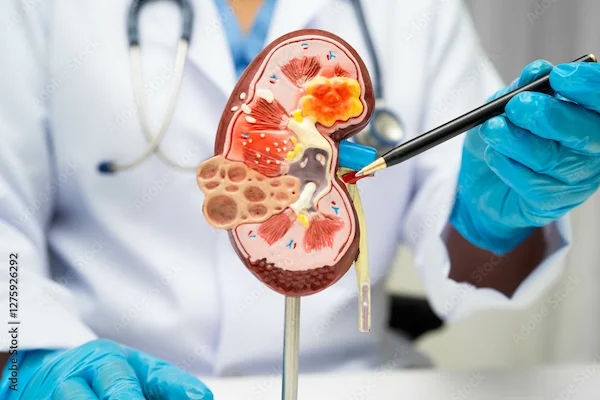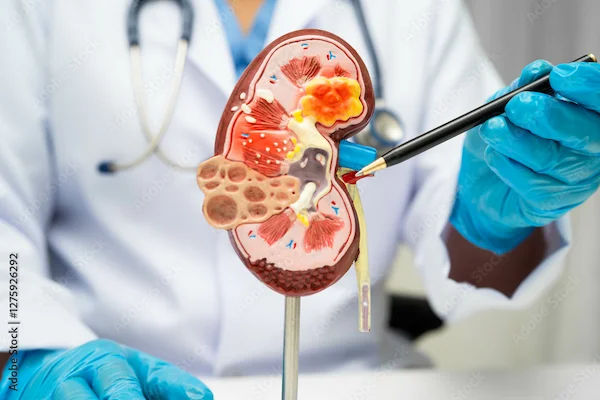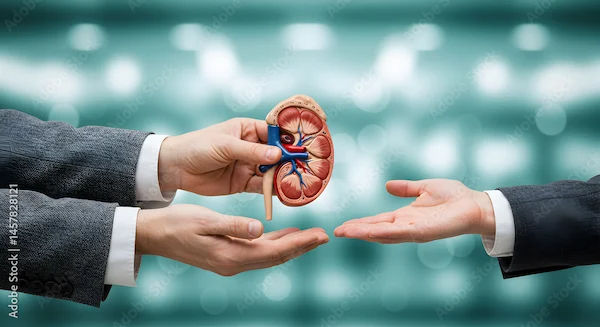Types Of Dialysis: All You Need To Know!
Explore the different types of dialysis, including hemodialysis and peritoneal dialysis. Learn how each works, their benefits, risks, and which option may be best for managing kidney disease effectively.

Written by
Last updated on 3rd Jul, 2025
Introduction
Dialysis is a life-saving treatment for individuals with kidney failure, also known as end-stage renal disease (ESRD). It takes over the critical functions of the kidneys, such as filtering waste products, excess fluids, and toxins from the blood. While dialysis cannot cure kidney disease, it can significantly improve quality of life and help manage the symptoms of kidney failure.
Choosing the right type of dialysis can be overwhelming for many patients. With different types available, it’s important to understand the differences, benefits, and potential challenges of each option to make an informed decision. In this article, we will explore the two main types of dialysis, what to expect during treatment, and offer practical advice to help you navigate your dialysis journey.
What Is Dialysis?
Dialysis is a medical procedure that replaces the normal function of the kidneys when they are no longer able to filter the blood effectively. There are two main types of dialysis: haemodialysis and peritoneal dialysis. Both methods involve removing waste, excess salt, and fluids from the blood, but the approaches differ.
Haemodialysis: The Most Common Dialysis Method
Haemodialysis is the most commonly used form of dialysis. It involves circulating the patient's blood outside the body through a machine, where it is filtered before being returned to the body.
How Does Haemodialysis Work?
In haemodialysis, the blood is drawn from the body through a vascular access point (an artery or vein) and pumped into a dialysis machine. The machine filters the blood through a dialyser (also known as an artificial kidney), which removes waste products, toxins, and excess fluids. The cleaned blood is then returned to the body.
Frequency and Duration
Haemodialysis typically requires patients to undergo treatment three times a week. Each session usually lasts between 3-5 hours. While most patients visit a dialysis centre for their treatments, home haemodialysis is also an option for some individuals.
Vascular Access for Haemodialysis
For haemodialysis, access to the bloodstream is necessary, which is typically achieved through one of the following methods:
Fistula: A surgically created connection between an artery and a vein, which is the preferred method due to its durability and low risk of infection.
Graft: A synthetic tube used to connect an artery and vein, an option if a fistula is not suitable.
Central Venous Catheter (CVC): A tube inserted into a large vein (often in the neck or chest), typically used temporarily or when other access points are unavailable.
Benefits of Haemodialysis
Highly effective at removing toxins and excess fluid from the body.
Provides a structured treatment schedule with predictable sessions.
Performed under medical supervision, offering reassurance to patients.
Considerations
Requires frequent visits to a dialysis centre, which may be difficult for people with mobility issues or who live far from a clinic.
The process can be time-consuming, with long treatment sessions.
Potential complications, such as infections at the vascular access point or blood pressure changes, may arise.
What Patients Should Know
Haemodialysis requires close monitoring of health and blood levels during treatment. Work with your healthcare team to ensure your dialysis treatment is as effective as possible.
Dietary and fluid intake adjustments may be necessary to reduce the workload on your kidneys between sessions.
Peritoneal Dialysis: An At-Home Alternative
Peritoneal dialysis (PD) works differently from haemodialysis. Instead of using a dialysis machine, PD uses the peritoneum (the lining of your abdomen) as a natural filter. A sterile solution called dialysate is introduced into the abdominal cavity, where it absorbs waste products and excess fluids from the blood vessels in the peritoneum. After the exchange process, the used solution is drained from the abdomen.
How Does Peritoneal Dialysis Work?
Peritoneal dialysis requires a catheter to be inserted into the abdomen, where it stays in place for the long term. The catheter is used to introduce dialysate (a special solution) into the abdominal cavity. After a set dwell time (usually 4-6 hours), the used solution is drained out, and the process is repeated.
There are two main types of peritoneal dialysis:
Continuous Ambulatory Peritoneal Dialysis (CAPD): A manual form of PD, where dialysate is exchanged several times a day. It does not require a machine, and patients can perform exchanges themselves at home.
Automated Peritoneal Dialysis (APD): A type of PD that uses a machine called a cycler to perform exchanges, typically at night while the patient sleeps.
Frequency and Duration
Unlike haemodialysis, peritoneal dialysis can be performed daily, often with exchanges happening 3-5 times per day. Automated PD typically takes place at night, reducing the need for daytime treatment.
Benefits of Peritoneal Dialysis
PD can be done at home, providing more flexibility and freedom in daily life.
It can be performed overnight (in the case of APD), meaning treatment takes place while you sleep.
It is less physically demanding during the treatment itself.
Considerations
PD requires active participation from the patient, including maintaining the catheter and performing exchanges.
There is a risk of infections (peritonitis) if proper hygiene practices are not followed.
It may not be suitable for patients with severe abdominal scarring or obesity, as the peritoneum may not function effectively.
What Patients Should Know
Maintaining strict hygiene is essential to reduce the risk of infections.
You will need to monitor the amount of fluid removed during the process and ensure that the catheter is in good condition.
Although PD offers flexibility, it still requires time and effort for exchanges, and you will need to learn to care for your catheter and equipment.
Choosing the Right Type of Dialysis for You
The choice between haemodialysis and peritoneal dialysis depends on several factors, including your overall health, lifestyle, preferences, and medical advice. Here are key considerations to help guide your decision:
Health Condition
Your overall health and any other medical conditions you have may influence the decision. For example:
If you have heart disease or other complications, peritoneal dialysis may be more suitable, as it generally puts less strain on the cardiovascular system.
If you have abdominal issues or significant scarring, haemodialysis may be the better option.
Lifestyle Preferences
If you prefer home-based treatment and have a good support system, peritoneal dialysis may be a better choice, offering flexibility in your schedule.
If you prefer a structured, clinic-based routine with professional supervision, haemodialysis may be a better fit.
Access to Dialysis Centres
Haemodialysis requires frequent visits to a dialysis centre. Consider the convenience of your location and transportation options when making your choice.
Time Commitment
Peritoneal dialysis may offer more flexibility, but it still requires time for exchanges.
Haemodialysis, while less frequent, may involve longer treatment sessions.
Consult Top Nephrologists To Know The Right Dialysis Type For You
Actionable Tips for Dialysis Patients
Regardless of the type of dialysis you choose, here are some helpful tips to enhance your experience and overall health:
Follow Your Doctor’s Instructions: Adhere to the prescribed treatment plan, including dietary restrictions, fluid intake, and medications.
Stay Active: Regular exercise can improve circulation, energy levels, and overall well-being.
Monitor Symptoms: Keep track of changes in your health and report them to your doctor’s team.
Leverage Your Support Network: Stay connected with family, friends, or support groups to maintain emotional and mental strength.
Maintain Hygiene: Whether you are undergoing haemodialysis or peritoneal dialysis, proper hygiene is crucial to preventing infections.
Conclusion
Dialysis is an essential treatment for those with kidney failure. Understanding the differences between haemodialysis and peritoneal dialysis will help you make an informed decision about which option is best for your needs. Both types of dialysis come with their own benefits and challenges, and your doctor’s team can guide you through the decision-making process.
With the right care, support, and adherence to your treatment plan, dialysis can help you manage kidney disease and live a fulfilling life. If you have questions or concerns about dialysis, don't hesitate to speak with your doctor for more guidance and information.
Consult Top Nephrologists
Consult Top Nephrologists

Dr. Hareesha Babu K
Nephrologist
25 Years • MBBS, MD (General Medicine), DM (Nephrology),FASN, FRCP(Glasg), FRCP (Edin)
Bangalore
Kidney & Hypertension Care, Bangalore
(125+ Patients)

Dr. Kity Sarkar
Nephrologist
15 Years • MBBS,MD(Genl. Med.), DrNB(NEPHROLOGY)
Kolkata
Dr. Kity Sarkar's Clinic, Kolkata

Dr. Luvdeep Dogra
Nephrologist
10 Years • MBBS, MD, DM (NEPHORLOGY)
Jaipur
Dr Dogras Health Clinic, Jaipur

Dr. S Bipin Kumar
Nephrologist
13 Years • MBBS, MD General Medicine, DM, Nephrology
Rajamahendravaram
SG KIDNEY CARE, Rajamahendravaram
Dr Ravi Jangamani
Nephrologist
16 Years • MBBS, MD General Medicine, DNB Nephrology
Bengaluru
Sushreya Skin and Kidney Clinic, Bengaluru
Consult Top Nephrologists To Know The Right Dialysis Type For You

Dr. Hareesha Babu K
Nephrologist
25 Years • MBBS, MD (General Medicine), DM (Nephrology),FASN, FRCP(Glasg), FRCP (Edin)
Bangalore
Kidney & Hypertension Care, Bangalore
(125+ Patients)

Dr. Kity Sarkar
Nephrologist
15 Years • MBBS,MD(Genl. Med.), DrNB(NEPHROLOGY)
Kolkata
Dr. Kity Sarkar's Clinic, Kolkata

Dr. Luvdeep Dogra
Nephrologist
10 Years • MBBS, MD, DM (NEPHORLOGY)
Jaipur
Dr Dogras Health Clinic, Jaipur

Dr. S Bipin Kumar
Nephrologist
13 Years • MBBS, MD General Medicine, DM, Nephrology
Rajamahendravaram
SG KIDNEY CARE, Rajamahendravaram
Dr Ravi Jangamani
Nephrologist
16 Years • MBBS, MD General Medicine, DNB Nephrology
Bengaluru
Sushreya Skin and Kidney Clinic, Bengaluru
_0.webp)



_1.webp)